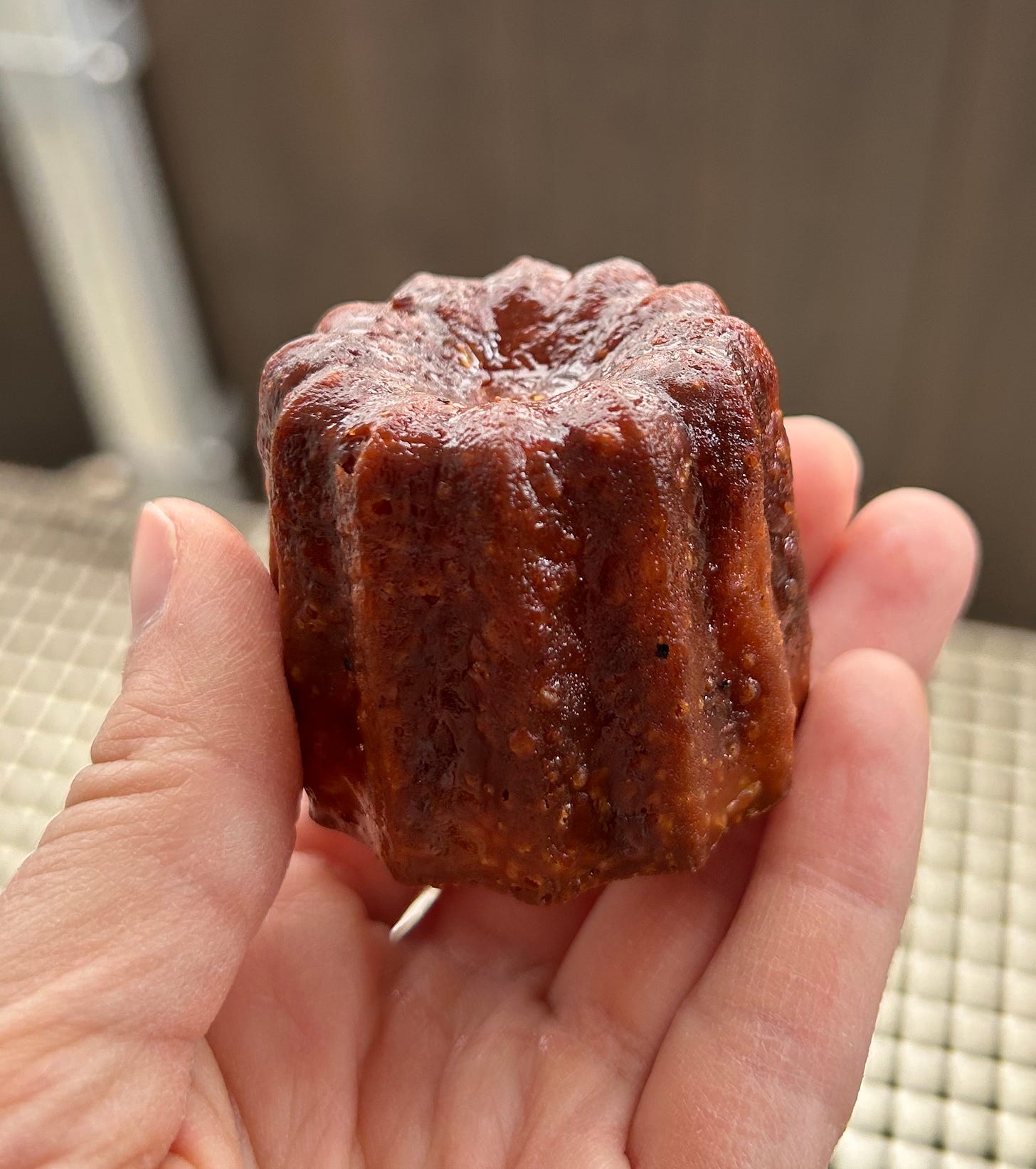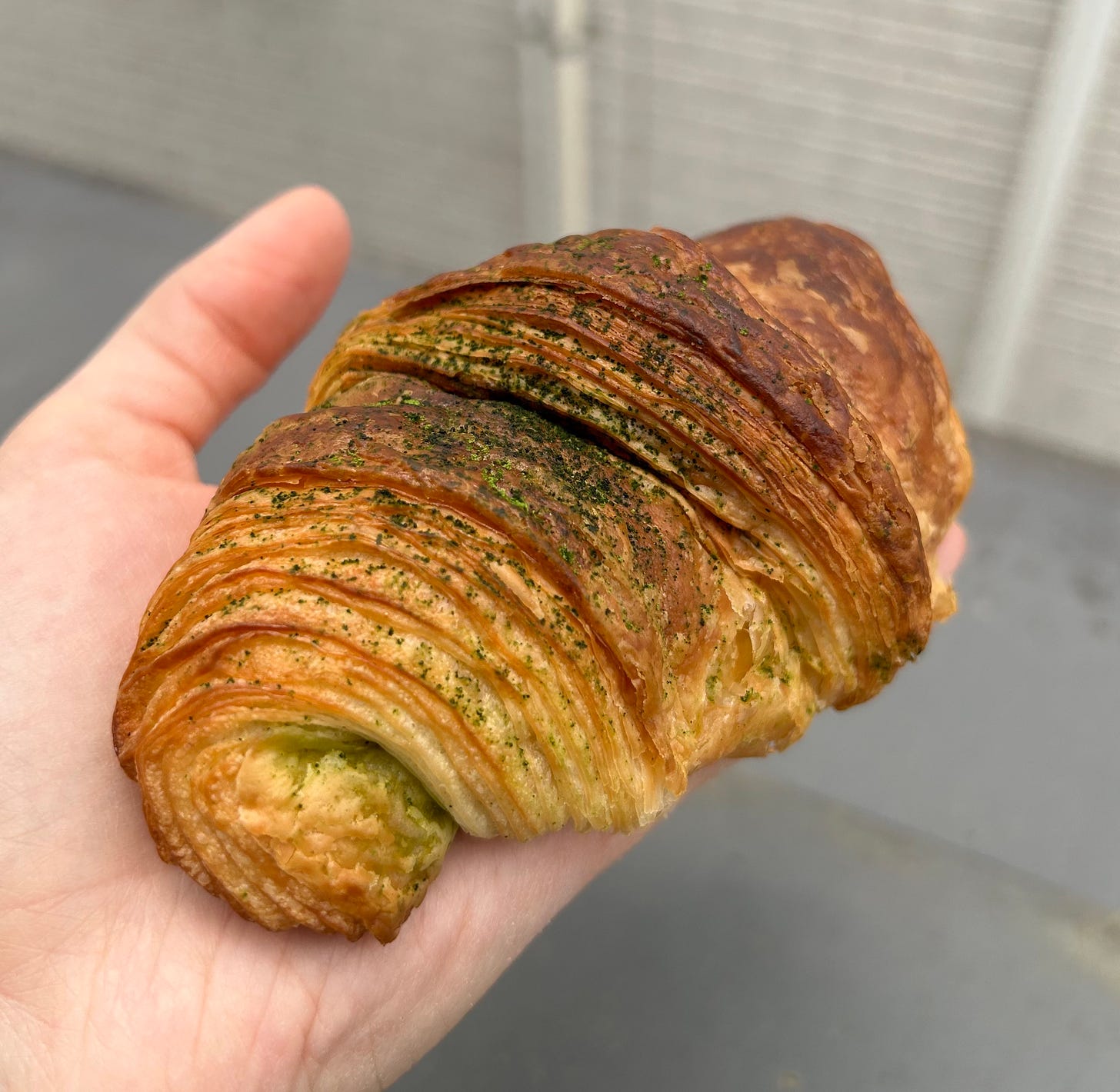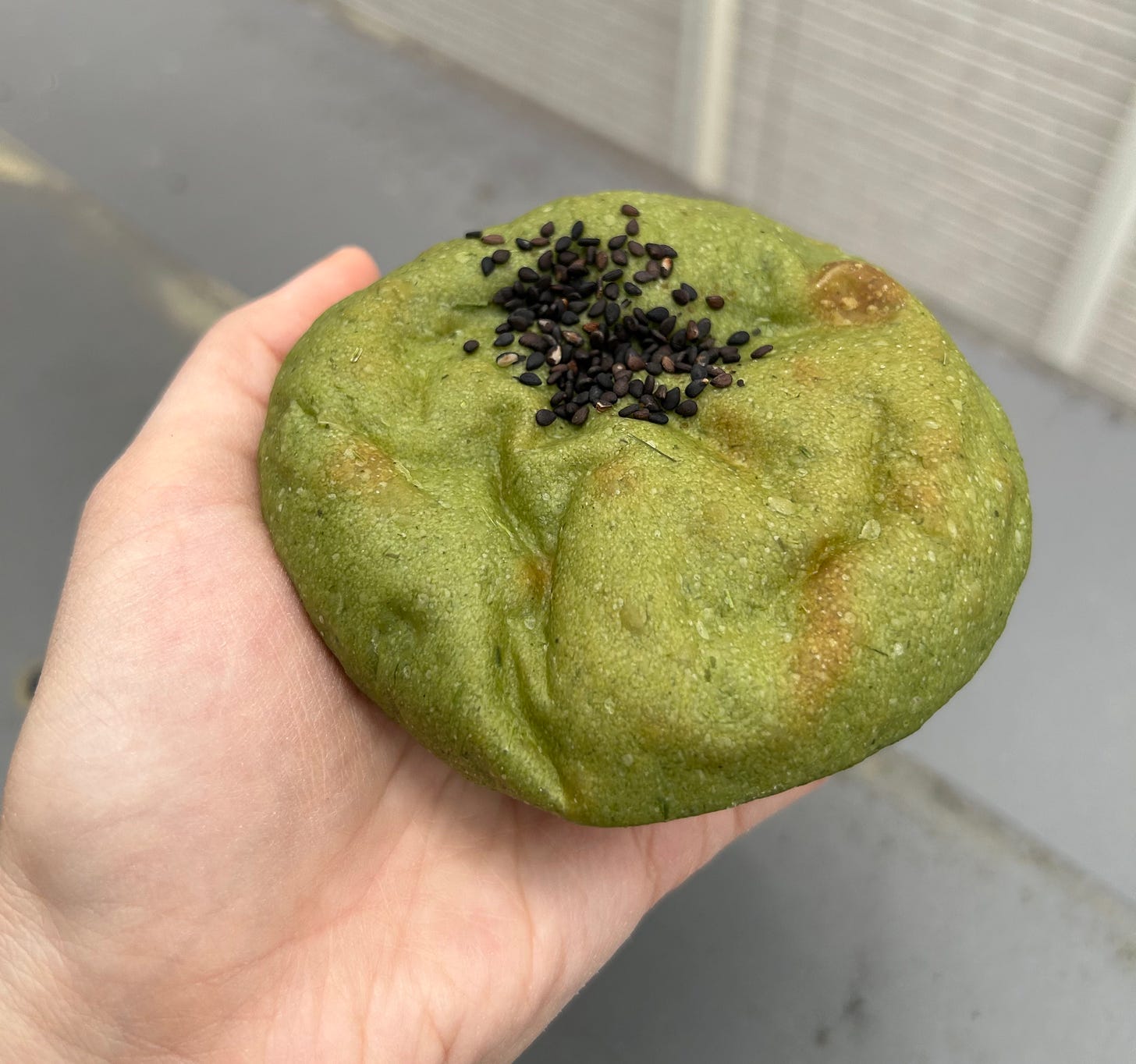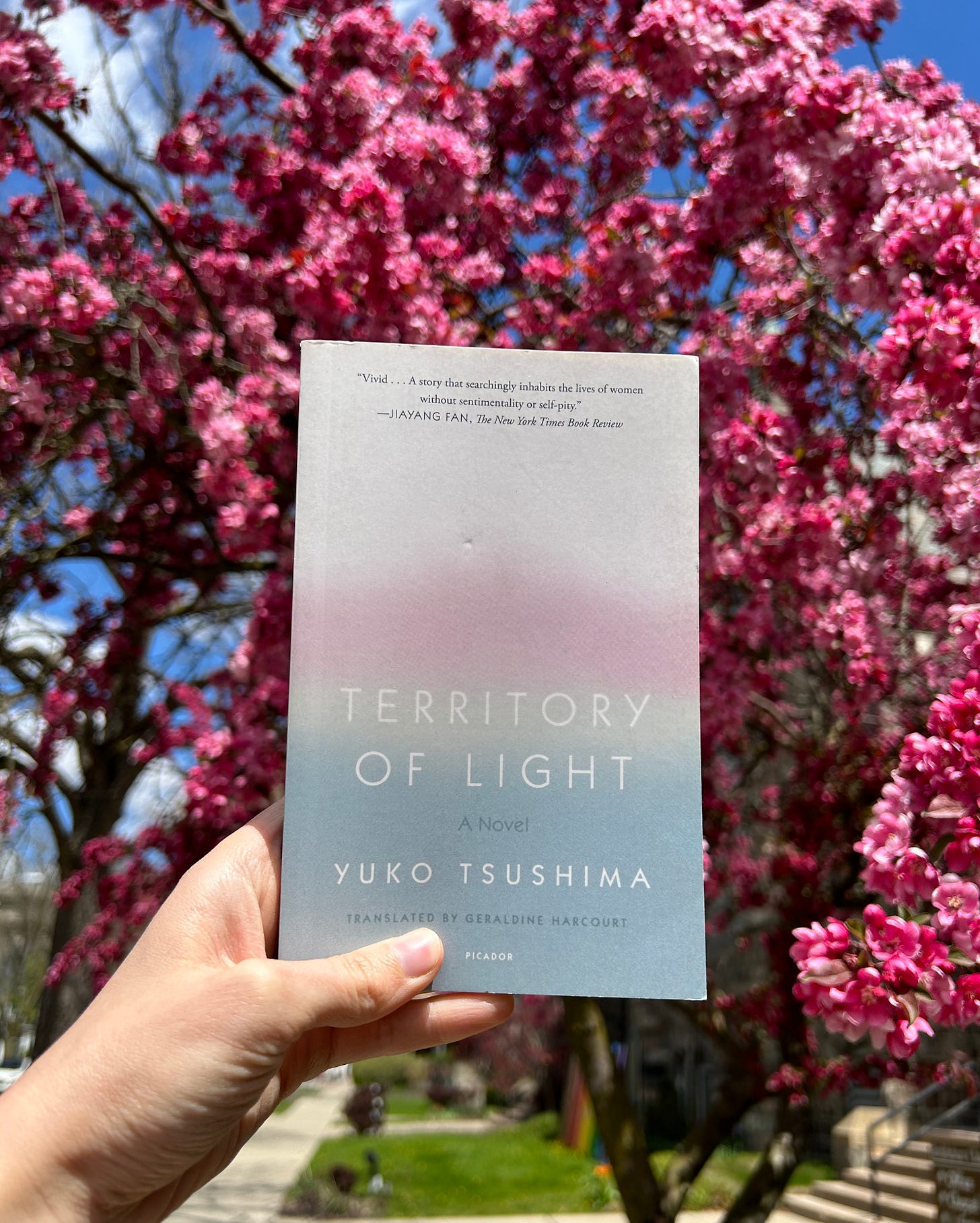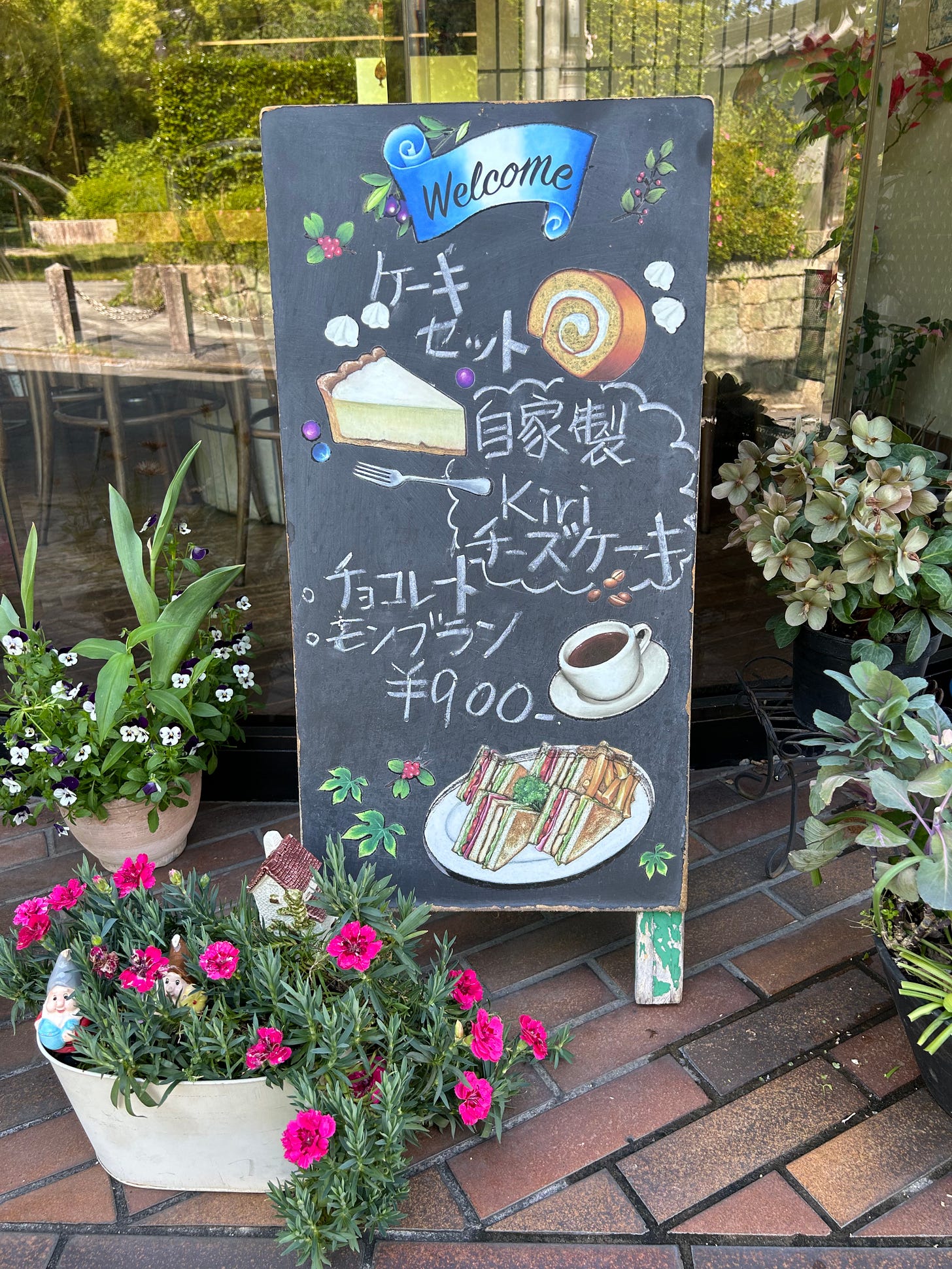
After Sapporo, we headed straight to Kyoto, and I was immediately amazed by how lush the city was — from bamboo forests near shrines to mountains surrounding the city in every shade of green. Kyoto’s buildings are notoriously old and squat and often lead out to narrow sidewalks, which are sometimes just painted lines on the road with no curb. I could have spent the entire trip here, or even an entire life, and been happy.
On our first morning in Kyoto, I strolled to a nearby bakery and was intrigued by its name: Alpenrose, a fuchsia flower that naturally grows across the European alps. When I went inside, I saw rows and rows of danishes, croissants, and French breads.
On a mission to try a new bakery every day, I went to the Kyoto Bakery Market the next day, which also had an abundance of impeccable French-inspired pastries.
I grabbed some metal tongs and loaded up my tray with a smorgasbord of Japanese buns and French pastries and brought them to the counter where a scanner(!) identified each kind of baked good and totaled it all up.
Pastry roll call:

I was surprised by just how many restaurants sought to evoke a French or Mediterranean vibe, and the older and narrower streets, coincidentally, only added to this atmosphere. The restaurant in our neighborhood with the longest line every day was not a ramen eatery or izakaya but a boulangerie. I came to Japan fully aware of how much the West admires (and at times appropriates) so many aspects of Japanese culture and, drawing from my knowledge of Hong Kong-style food, I was also aware of how much culinary fusion there has been historically between European, Asian, and American cultures. But still, it felt more real and fascinating to witness this culinary synthesis go the other way around in Asia (before this, I only had an Asian American context for reference) and see just how prevalent and respected French pastry methods were in Kyoto.
Food wasn’t the only arena in which Japanese and European cultures came together — I learned recently that a book I started in Kyoto is an I-novel: a Japanese style of autofiction that emerged out of Japan’s increased interactions with Europe during the Meiji Restoration. More Japanese writers were exposed to the work of novelists like Flaubert and Tolstoy and fused together aspects of Japanese and Western fiction. I-novels tend to portray an individual’s inner life, philosophy, and emotions through their private thoughts. The book in question that I read on every train ride:
“Seized by fear, I would have an overpowering sensation of spiralling down into dark nothingness. That was without a doubt my worst nightmare as a child. But even as it petrified me, it was so intensely pleasurable that I couldn’t help feeling guilty. That supposedly inaccessible warmth and softness delivered a joy as sharp and dazzling as a lightning flash, and I couldn’t tell the fear and the joy apart.”
Yuko Tsushima’s I-novel Territory of Light (trans. Geraldine Harcourt) contains moments of the some of the most stunning and emotionally complex prose I’ve read in a long time. The story appears deceptively simple: a woman who has separated from her husband raises their little girl on her own. They live on the top floor of a four-story office building in Tokyo that has been renovated to become a living space. And it is so much more than that — the sun-drenched apartment becomes the site of games, sleep, and arguments between the mother and daughter. People in the mother’s life constantly urge her to get back together with her husband because they don’t think a single mother can handle parenting on her own. But she wants to prove that the two of them can be their own family and that she can live the life she wants. This is not a very plot-driven story, and at times appears to be drowned in quotidian details, but every chapter or two had paragraphs or descriptions that were simply beautiful and brilliant, saying things that you know to be true but come as a revelation in Tsushima’s voice. Rowan Hisayo Buchanan has much to say about the novel’s social commentary and emotional depth, and I have her article to thank for teaching me about the history of the I-novel. I now want to get my hands on even more I-novels — maybe even the works of Tsushima’s famous father, Osamu Dazai!
‘Til next time,
Shannon









